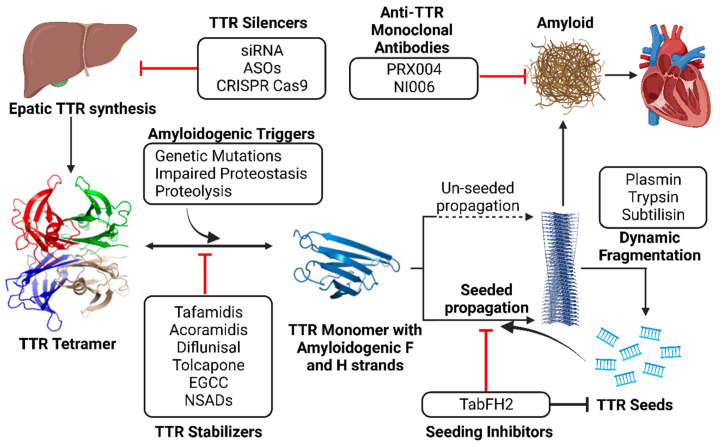Figure 5.
Multi-target approach to ATTR amyloidosis. TTR dissociation provides monomers with high propensity to nucleation and fibril formation through self-association of amyloid-driving segments. TTR stabilizers maintain the tetrameric form, halting tetramer dissociation and unseeded polymerization. After spontaneous and proteolytic fragmentation of fibrils, small fragments may serve as seeds that induce amyloid seeded propagation. The peptide inhibitor TabFH2 does not affect tetramer stability, but it binds to seeds, hindering self-recognition and seeding. Both strategies seem synergistic and could potentially be used in combination. The contemporary administration of TTR silencers and anti-TTR monoclonal antibodies may prove effective since they block TTR synthesis and promote amyloid regression.

